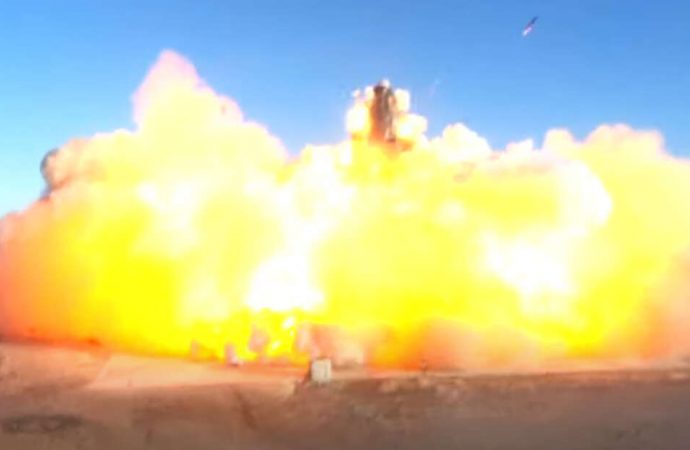SpaceX’s Starship SN8 has exploded on landing, after reaching a height of 12.5 kilometers (7.8 miles) in its first high altitude test flight. The complete destruction of the spacecraft is not quite the setback for Elon Musk’s plans to colonize Mars it might seem. The chance of a successful landing were considered slim, and the company is hailing the rest of the flight a success.
Source: IFL Science
The SN8 launched successfully on Wednesday from SpaceX’s launchpad in Cameron County, Texas. A major aim of the mission was to attempt a “landing flip maneuver”, which SpaceX hopes will allow future craft to use the atmosphere to slow down on return from orbit. Despite brief signs of parts of the craft catching fire just before the two minute mark of the flight, the journey continued to the intended peak, before the craft flipped successfully for descent.
Shortly before reaching the ground, SN8 twisted again as intended, coming down tail-first. However, the final stage of the descent was faster than intended, leading to an impressive pyrotechnic display on touchdown, leaving little trace not only of the spacecraft, but also the launch tower
SpaceX’s publicity department were undaunted, however, finishing the livestream with a message reading; “Awesome test, congrats starship team” followed by “SN9 up next.”
“Low pressure in the fuel header tank during the landing burn led to high touchdown velocity resulting in a hard (and exciting!) landing,” commentary below the video explained.
Prior to the launch Space X CEO Musk had said there was only a “one in three” chance everything would go so smoothly the craft would land successfully. On that basis, getting all the way through to only fail at the last hurdle can be seen as a good outcome.
The Starship series are planned to be capable of taking 100 tons according to SpaceX’s website though other estimates put it at around 165 tons of payload to low Earth orbit, more than the Saturn V rockets that took astronauts to the Moon. This could allow it to take 100 crew members to space, and open the way for Musk’s much touted (but controversial) Mars missions. Moreover, the adjustments are to make it fully reusable as well, slashing launch costs both for missions to the ISS, and for voyages to the Moon and Mars.
The Starship series uses methane rather than the existing Falcon’s kerosene for fuel, as well as recycling gasses that would previously have been dumped, increasing the efficiency of combustion. The body flaps give it the capacity to perform maneuvers to maximize atmospheric drag, thus in theory allowing reuse after orbital flights.
It’s been a busy period for SpaceX. On Monday it delivered a Dragon supply capsule to the International Space Station (ISS), marking the first time two Dragon capsules have been parked next to each other in the ISS’s docking slots following the recent successful delivery of astronauts. This week’s docking also involved the carrier docking itself, rather than being collected by the ISS’s robot arm.
Source: IFL Science

































Leave a Comment
You must be logged in to post a comment.